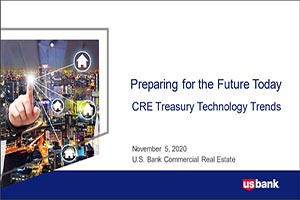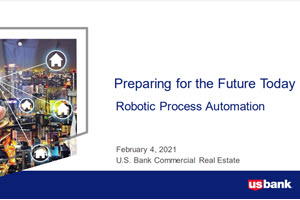Intensifying competition, cost increases, and rising customer expectations make achieving profitability more challenging than ever. Embracing technology that enables digital payment acceptance can give businesses a competitive edge and boost financial performance.
According to the 2022 AFP Digital Payments Survey, only 33% of all B2B payments are checks, down significantly from 81% in 2004. The pandemic accelerated the adoption of digital payments across all business sectors, including B2B, and there’s never been a better time to upgrade your payment acceptance processes. Digital payments help you get paid faster, which helps speed up cash flow. Digital payments also improve workflow by reducing time spent on manual reconciliation and creating a better customer experience. Read on to learn 5 reasons why you should encourage digital supplier payments.
1. Accelerate cash flow and reduce DSO.
Operating cash flow is a key metric of financial performance for most organizations, especially those with large volumes of recurring payments. Replacing check acceptance with multiple digital payment options makes it easier for businesses to complete the payment on time. Simplifying payments for the customer helps you get paid faster, leading to an increase in cash flow and reducing your days sales outstanding (DSO).
Today’s consumers use credit and debit cards for everyday B2C transactions—it’s safe, quick, and easy. Those benefits apply to B2B, too, so switching from a paper check to a digital payment made via corporate card, virtual card, ACH, RTP, or wire transfer is a natural progression.
Long DSO times impact a company’s bottom line and may require additional resources to track down buyers and collect outstanding balances. Buyers want payment options that allow them to pay invoices how and when they want, so simplifying payment acceptance can help them pay faster and reduce DSO.
2. Control costs on commercial credit card acceptance.
Accepting business credit card payments is an ideal option that can attract new customers, prevent attrition, and increase revenue. Implementing Commercial Card Optimization can lower transaction costs by automatically collecting and transmitting additional data points that help qualify transactions for reduced cost Level 2 and Level 3 interchange rates.
Commercial Card Optimization can increase leadership buy-in for encouraging credit card acceptance by reducing costs, and the additional data points help card brands validate the transaction’s authenticity. This information also helps reduce risk of a transaction dispute, which qualifies the transaction for a lower interchange rate. Data collection is complex. With Level 3 processing, 25 data fields must be correctly entered and arranged for every transaction; with Level 2, there are 9 data points. The data needs to be received correctly, and the transaction must be authorized and settled within 24 hours to avoid costly transaction downgrades. Choosing the right payments partner can help ensure you get the latest data requirements to help control commercial card acceptance costs.
The cost savings from optimizing interchange costs can help your bottom line. If you’re not yet offering commercial card payment acceptance, now is the time to implement credit card acceptance and promote it as a payment option to your business customers.
3. Safeguard your bottom line.
The shift to B2B digital payments is already growing, with 32% of organizations reducing the use of check payments. The speed, simplicity, and security of digital payments are primary reasons more businesses are switching to these payment acceptance methods. But as companies expand their digital payment options, security risks, including hacking, phishing, and more, are rising – as are the costs. In 2022, the average cost of a single U.S. data breach jumped to $9.4 million.
Beyond the immediate expense, a high-profile breach can cause long-term damage to your brand reputation. The fallout from breach events can drive away customers and cause stock prices and shareholder value to fall. Implementing advanced payment security strategies with a proven payment provider can help protect your brand, secure payment and transaction data, and reduce business and compliance risks. A certified provider also makes it easier to validate compliance with PCI DSS requirements – the security standard for any business that accepts card payments.
To protect sensitive payment data, look for a provider that maintains a Level 1 PCI DSS certification with assistance and protection for your company. They should also offer a layered security approach that includes EMV 3D Secure, point-to-point encryption, tokenization, and fraud protection solutions.
4. Add to your triple bottom line.
Also known as the TBL or 3BL, the triple bottom line is an accounting framework that evaluates performance by three measures: financial, social, and environmental. The goal is to gain a better, fuller perspective on a business’s impact on society. Today’s consumers are engaged with sustainability efforts and choose companies that share their values. Many organizations are adopting the “triple bottom line” as part of their corporate social responsibility efforts—and reaping the rewards. A TBL can create a positive brand reputation, help increase revenue, decrease expenses and build customer loyalty.
Digital invoicing and payments are a sustainable choice that saves resources, time, and the expense of billing paperwork, printing, and postage. Tax incentives and government rebates for organizations that adopt specific sustainable practices can also help boost your TBL and shareholder value.
5. Improve efficiency while improving quality.
A dynamic and integrated digital payment solution gives your business the opportunity to:
- Increase operational efficiency by reducing manual processes and reallocating staff to more important tasks
- Increase cash flow, cash visibility and future cash predictions
- Enhance data security to prioritize protection of transaction data at rest and in transit
- Control costs by cutting time spent on check processing, reconciliation and settlement, and implementing Commercial Card Optimization to qualify commercial credit card payments for lower interchange rates
Change takes time, particularly for B2B organizations. If digital payments aren’t a business priority, now is the time to start the conversation. Many digital payments are instantaneous or nearly instantaneous, which fuels cash flow and supports improved cash management. You’ll gain additional transparency into how funds are moving and automating processes can help reduce errors.
Engaging with your buyers is critical to success. Communicate the variety of payment options you offer and educate buyers about the mutual benefits of your preferred methods.
If you’d like to learn more about digital B2B payments, we can help. Complete this form to have one of our specialists contact you.




























































